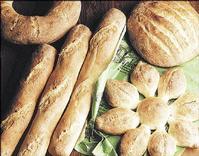Tesi Johnson, Gleaner Writer

THIS WEEK, Food writer Tesi Johnson continues her interesting series: The Science Behind Cooking, with a look at what happens when yeast is used in bread making. You have missed: how egg whites become megengue; the role of pectin in jams/jellies and how coffee beans become a tasty brew.
Yeast acts as a leavener in baked products, causing them to 'rise.' If one is to consistently produce good quality baked goods, it is integral
to understand the role of each ingredient; Its mode of action and the conditions under which it will produce your desired results. Yeast is a particularly unusual ingredient because it is alive!
Most yeast is sold in single-use packets or bulk bags as dry active yeast. It is a single-cell fungus, making it a living organism. Like all living things, yeast must 'feed' for energy, and it is through feeding and multiplying, that the yeast gives
volume to your baked products.
AS IT FEEDS
Yeast feeds only on sugar in its simplest form - sucrose. It will either feed on the sugar in your dough mixture, or by fermentation convert the complex carbohydrates in the flour into the simple sugars, which it can then use. As it feeds, it releases the energy inherent in sugar by a process known as anaerobic respiration. The by-products of this process are alcohol and carbon dioxide - then the magic happens. Carbon dioxide is a gas, so when released into your dough it will give it the light and airy texture with which you are familiar.
Yeast is very sensitive to temperature so it's important to let your yeast dough rise in a spot where the temperature is regulated. Moist dough between 78 degrees and 80 degrees is the ideal environment for yeast growth. At higher temperatures, the dough may rise too quickly creating large bubble pockets, thus a crumbly texture in the final product. At lower temperatures like that in the refrigerator, the dough will rise more slowly and will have higher alcohol content. Further, yeast dies instantly at 140 degrees, so do not expose to temperatures exceeding 120 degrees until you intend to end the leavening process. So, once baking begins, the yeast will die, and also the alcohol will burn off. However, this alcohol was not without purpose. It forms an important component of the bread's flavour.
Useful yeast facts:
Salt impedes the growth of yeast, so an extra half teaspoon of salt will significantly slow the rise of the dough.
Yeast should always be at room temperature to begin a recipe.
You should also test your yeast to be sure it's viable before using it in a recipe. To check, mix a small portion into a quarter cup of lukewarm water with a quarter teaspoon of sugar. If viable, it should begin to bubble and ferment within five to 10 minutes. If not, the yeast is dead and useless, therefore it should be thrown out.
The portion of sugar in your dough is important. If you add too much sugar, the yeast will 'eat' and release too much carbon dioxide, resulting in your bread rising too much. If you don't add enough sugar, the yeast will not eat enough and thus not release enough carbon dioxide to make your bread rise as it should.

